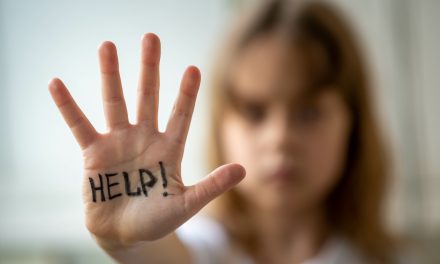In recent years, the United States has experienced an unexpected resurgence of leprosy, also known as Hansen’s Disease, which is an infectious condition that affects the peripheral nervous system and skin. Among the states bearing the brunt of this rise are Florida, New York, Louisiana, Texas, California, and Hawaii, accounting for a staggering 70% of reported cases. Among these states, Florida is currently at the pinnacle, contributing 20% of the national cases. A concerning observation is that several of the new cases in Florida show no zoonotic exposure, raising questions about the disease’s transmission.
Understanding Leprosy (Hansen’s Disease)
Leprosy, or Hansen’s Disease, is an ancient infectious disease caused by the bacterium Mycobacterium leprae. This slow-growing bacterium primarily affects the skin and peripheral nerves, leading to various symptoms ranging from mild to severe. The disease is chronic, and if left untreated, it can cause irreversible damage to nerves, skin, and other organs. Thankfully, leprosy is curable with early diagnosis and proper treatment.
Transmission of Leprosy
The exact mode of transmission of leprosy is not entirely clear, but it is believed to spread from person to person through respiratory droplets. Long-term, close contact with an untreated infected person is thought to be the primary route of transmission. Contrary to popular belief, leprosy is not highly contagious, and the majority of people have a natural resistance to the bacterium.
Leprosy in Florida: A Growing Concern
Among the states affected, Florida stands out as a major hotspot for leprosy cases. The state’s share of 20% of the national cases underscores the seriousness of the issue. Of particular concern is the detection of new cases with no apparent zoonotic exposure. Zoonotic exposure refers to contracting the disease from animals. The fact that some cases lack this connection suggests the presence of other transmission pathways or endemic foci within the state.
Central Florida’s Endemic Location
The Centers for Disease Control and Prevention (CDC) has identified Central Florida as a potential endemic location for leprosy. An endemic location refers to an area where the disease is consistently present at a higher-than-expected level. This finding highlights the urgent need for increased surveillance, diagnostic awareness, and research to understand the factors contributing to this trend.
Physicians’ Recommendations
Given the concerning rise in leprosy cases in Florida, the CDC has issued recommendations for healthcare professionals in the region. Physicians are urged to consider leprosy as a differential diagnosis in patients who have traveled to the area, even if no other risk factors are present. Early diagnosis and prompt treatment are essential in preventing the spread of the disease and mitigating its impact on patients.
Symptoms of Leprosy: Recognizing the Signs of Hansen’s Disease
Leprosy is a complex infectious condition that primarily affects the skin and peripheral nerves. As the United States faces an alarming rise in leprosy cases, understanding the symptoms of this disease becomes essential for early detection and effective treatment. Recognizing the signs of leprosy is crucial in containing its spread and preventing complications associated with delayed diagnosis. Here are the key symptoms to be aware of:
Skin Lesions
One of the most common and noticeable symptoms of leprosy is the presence of skin lesions. These lesions may appear as flat, raised, or nodular patches with varying degrees of pigmentation. The color of the lesions can range from pale to dark, and they are often insensitive to touch, heat, or pain due to nerve damage. Skin lesions can appear anywhere on the body but are commonly found in cooler areas like the face, ears, hands, feet, and buttocks.
Nerve Damage and Loss of Sensation
Leprosy primarily targets the peripheral nerves, leading to nerve damage and a subsequent loss of sensation in affected areas. As the disease progresses, patients may experience a reduced ability to feel pain, temperature, and touch. Consequently, injuries and wounds often go unnoticed, increasing the risk of secondary infections and complications.
Muscle Weakness
Nerve damage caused by leprosy can result in muscle weakness or paralysis in the affected areas. This can lead to deformities and disabilities, especially in the hands and feet. Muscle weakness may affect a patient’s ability to perform everyday tasks and significantly impact their quality of life.
Thickened Nerves
In some cases, leprosy can cause the nerves in the skin to thicken, leading to visible and palpable lumps or nodules. These enlarged nerves are a characteristic feature of leprosy and are often found near the affected skin lesions.
Eye Problems
Leprosy can affect the eyes, leading to various eye problems, including dryness, reduced blinking reflex, and, in severe cases, blindness. Patients may experience pain, redness, and sensitivity to light due to nerve damage in the eyes.
Nasal Symptoms
A less common manifestation of leprosy is the involvement of the nasal passages. Patients may experience a stuffy or runny nose, nosebleeds, and crusting or erosion of the nasal mucosa. If left untreated, this can result in irreversible damage to the nasal septum.
Claw-Like Hand Deformities
In advanced cases of leprosy, repeated injuries to insensitive hands can lead to deformities known as “claw hands.” The muscles controlling the fingers may weaken or atrophy, causing the fingers to curl inward. This deformity can significantly impact a patient’s ability to perform simple tasks.
Contagious Factor of Leprosy: Dispelling Myths and Understanding Transmission
Hansen’s Disease has long been shrouded in myths and misconceptions regarding its contagious nature. It is essential to dispel these misunderstandings and understand how the disease spreads to effectively combat its resurgence in the United States. Contrary to popular belief, leprosy is not highly contagious. The bacterium Mycobacterium leprae responsible for causing leprosy has a low infectivity rate, and the majority of people have a natural resistance to the bacteria. The disease primarily spreads through prolonged and close contact with untreated individuals who have leprosy. It is essential to understand that casual contact, such as brief interactions or being in the same vicinity as an infected person, does not pose a significant risk of transmission.
Transmission primarily occurs through respiratory droplets released when an infected person with untreated leprosy coughs or sneezes. These droplets may contain the M. leprae bacterium, which can then enter the body through the respiratory tract of a susceptible individual. The incubation period for leprosy, which is the time between exposure to the bacterium and the appearance of symptoms, can be quite long, ranging from months to even years, making it challenging to identify the source of infection. It is important to note that leprosy is treatable with a combination of antibiotics. Early diagnosis and appropriate treatment not only cure the disease but also significantly reduce its contagiousness. Once a patient begins treatment, they quickly become non-infectious and pose no risk to others. Therefore, swift detection and prompt initiation of treatment are vital in breaking the transmission chain and preventing further spread.
Treatments for Leprosy Today
Modern medicine offers effective treatments for leprosy, with the World Health Organization (WHO) recommending a multi-drug therapy (MDT) regimen. The MDT approach involves using a combination of antibiotics to target the M. leprae bacterium and prevent the development of drug-resistant strains. The standard MDT treatment for leprosy includes the following medications:
Dapsone: This is one of the primary drugs used in the MDT regimen. It inhibits the growth of M. leprae bacteria and helps control the disease.
Rifampicin: Another essential component of MDT, rifampicin is effective in eliminating the bacterium from the body.
Clofazimine: This drug is used for the treatment of certain forms of leprosy and plays a crucial role in the MDT regimen.
The specific duration and combination of drugs used in the MDT regimen depend on the type and severity of leprosy. Patients are typically monitored closely during treatment to ensure compliance and detect any adverse effects. Additionally, managing the complications and disabilities caused by leprosy is an integral part of patient care. Physiotherapy, reconstructive surgery, and supportive care can significantly improve the quality of life for those affected by the disease.
A Reminder To Floridians; Health Comes First; Stay Safe and Stay Vaccinated
The concerning rise of leprosy cases in Florida, coupled with the state’s status as a top hotspot for this infectious disease, serves as a stark reminder of the importance of taking personal health seriously. As Floridians face this challenge, it is crucial to remain vigilant and proactive in protecting ourselves and our communities. In the fight against leprosy, as well as other infectious diseases, vaccinations play a vital role. While leprosy is not vaccine-preventable, it highlights the broader significance of staying up-to-date with recommended vaccinations. Vaccines have proven to be one of the most effective tools in preventing the spread of various infectious diseases, saving countless lives, and reducing the burden on our healthcare systems.
Floridians must prioritize vaccination and follow the guidelines set forth by public health authorities. By getting vaccinated, not only do we safeguard our health but also contribute to building herd immunity, protecting those who may have compromised immune systems or are unable to receive certain vaccinations due to medical reasons. Moreover, while leprosy is a concerning issue, it is essential to maintain perspective and remain proactive about overall health and wellness. This includes regular check-ups, seeking medical attention promptly when needed, and adhering to prescribed treatment plans. As a community, we must continue to support research efforts aimed at understanding the factors contributing to the rise of leprosy cases in Florida. By supporting public health initiatives and funding research, we can equip ourselves with the knowledge needed to combat this resurgence effectively.
Above all, staying informed and educated about leprosy and other infectious diseases empowers us to make informed decisions for ourselves and our loved ones. Together, through a combination of public health measures, vaccinations, and a commitment to personal health, we can mitigate the impact of leprosy and other health challenges facing our community. Let us stand united as Floridians, protecting ourselves and each other. By embracing a culture of health consciousness, we can forge a brighter and healthier future for our beautiful state, ensuring that our communities thrive and prosper for generations to come.
Recognizing The Need For Vigilance and Implementing Appropriate Measures; Keeping The Spread of Hansen’s Disease Under Control

The rise in leprosy cases across the United States, with Florida at the forefront, is a matter of grave concern. Leprosy, or Hansen’s Disease, is an infectious condition affecting the peripheral nervous system and skin. While the exact transmission mechanisms are not entirely clear, the spike in cases with no zoonotic exposure raises questions about other potential routes of transmission. The identification of Central Florida as a possible endemic location emphasizes the need for heightened vigilance among healthcare professionals. Timely recognition and appropriate treatment are crucial in containing this resurgence and ensuring the well-being of those affected. Public health authorities must continue to monitor the situation closely, conduct further research, and implement targeted interventions to control the spread of leprosy and protect public health.

































South Florida Media Comments